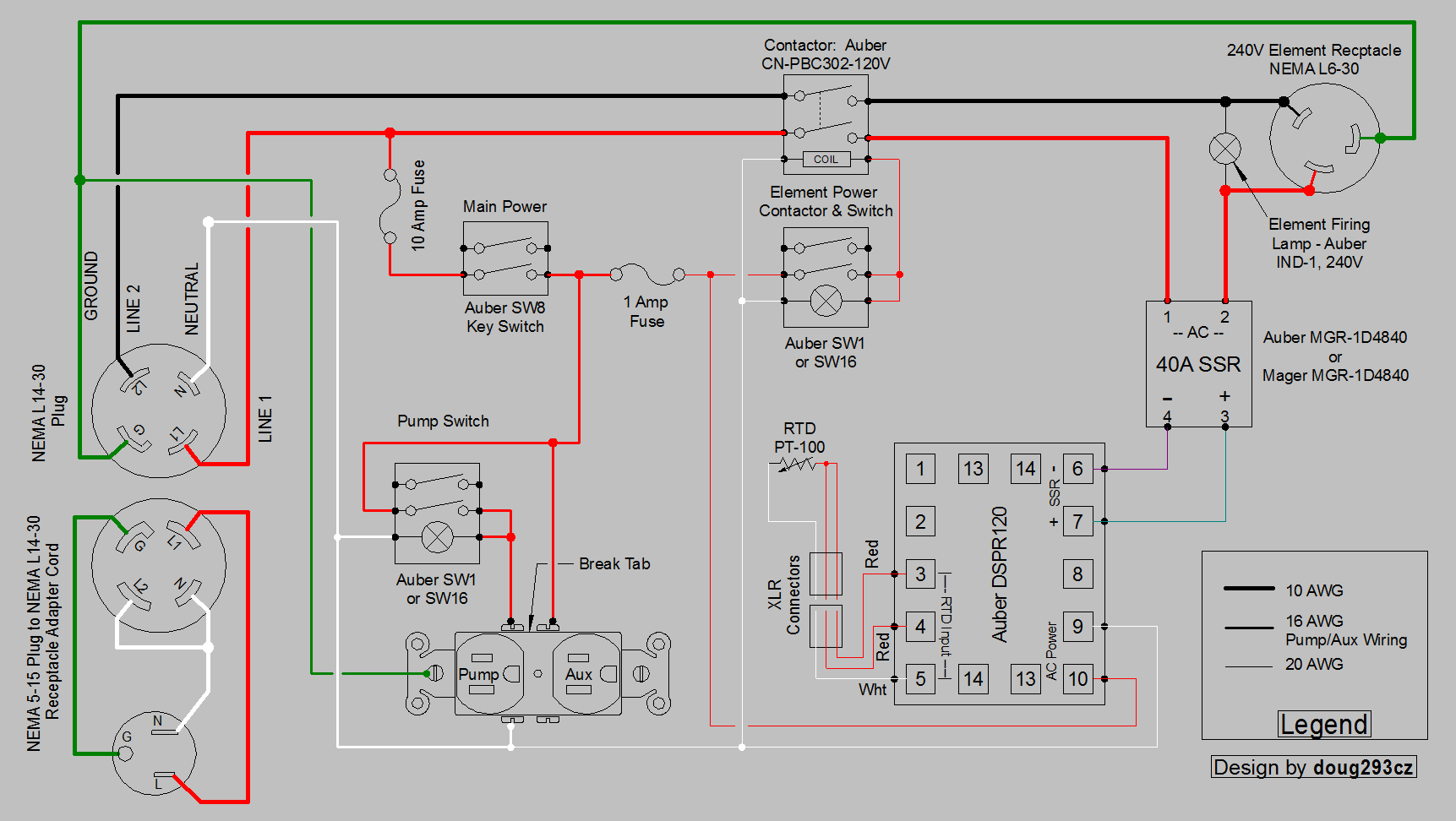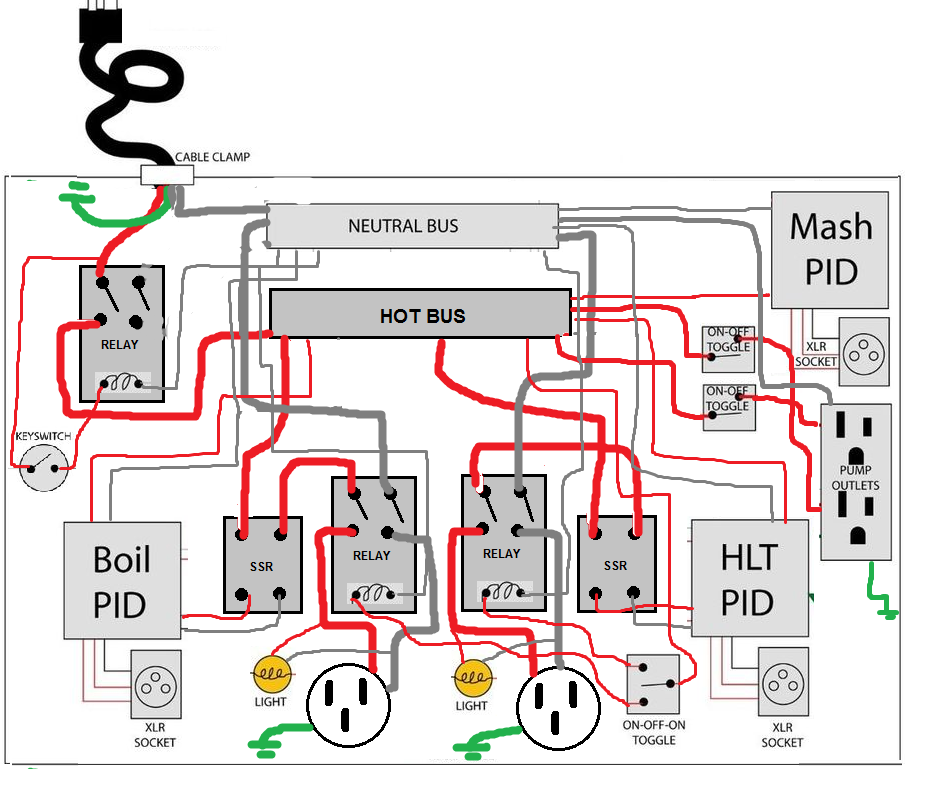sicktght311
Well-Known Member
- Joined
- Oct 16, 2018
- Messages
- 686
- Reaction score
- 304
Anyone build one of their own? Show me what you got. This is the last piece of the puzzle in my 5gallon batch e-herms build. For now i'm running 2x Inkbird IPB-16s, one for the HLT/Mash control, one for Boil and temp monitoring while i whirlpool and chill. I'm running a single 1650watt element in the HLT, and a single 1650watt element in the BK, and before you start telling me to upgrade to 240v, no i dont mind the extra heat up times, and it boils just fine.
I like the overall "Complete" look of a fully dedicated 2 element/3 pid + Timer control panel, but have no plans to move to 240v until I upgrade to a much larger system, as running a 240 line in my basement would be a PITA and require me to completely rework my breaker since i already have an inground pool, hot tub, AC, etc. I'm currently using a 20amp extension cord to a 20amp outlet thats 15 feet away from my brew setup thats currently dedicated for my basement sump pump. Our basement sump pit is dry unless there's massive rains, so its something i can easily unplug and plug as needed.
I'm fully up to speed and filled with knowledge of how the panels work from a usage standpoint, how the entire e-herms system works, etc etc, but I have yet to really dive into actually buying the parts and wiring up a 120v panel. I've done my fair share of wiring in the past, and i'm not afraid to build something, as its well within my skill set, i've just never researched why and what. Anyone have any experience? Ideally i'd want it to be exactly like the Kal/Spike panel, 3 Pids, one for mash temp monitoring, one for HLT control, one for BK control. Timer, element selector switch, 2x pump switches (I use a Mark II pump for the wort, and a solar pump for the HLT recirculation), etc.
First and foremost, is it reasonable to think that i could pretty much use any wiring diagram built for 240v, and just convert it to 120v outlets? Wouldn't the panel put out whatever voltage/amps is asked of it from the element, regardless of how its wired, so long as its within the total breaker amperage? I'm just thinking ahead because it would be nice if i could build a panel that's 120v ready with 240v gauge wiring, that way i would just swap out the receptacles for 240v in the future if i ever move to a larger system. As it is, both of my kettles were originally wired for 240v, so the 120v elements currently in them just reused the 240v gauge wiring with new plugs.
sorry for the novel, just wrapping my head around this, and you guys are the best resource!
I like the overall "Complete" look of a fully dedicated 2 element/3 pid + Timer control panel, but have no plans to move to 240v until I upgrade to a much larger system, as running a 240 line in my basement would be a PITA and require me to completely rework my breaker since i already have an inground pool, hot tub, AC, etc. I'm currently using a 20amp extension cord to a 20amp outlet thats 15 feet away from my brew setup thats currently dedicated for my basement sump pump. Our basement sump pit is dry unless there's massive rains, so its something i can easily unplug and plug as needed.
I'm fully up to speed and filled with knowledge of how the panels work from a usage standpoint, how the entire e-herms system works, etc etc, but I have yet to really dive into actually buying the parts and wiring up a 120v panel. I've done my fair share of wiring in the past, and i'm not afraid to build something, as its well within my skill set, i've just never researched why and what. Anyone have any experience? Ideally i'd want it to be exactly like the Kal/Spike panel, 3 Pids, one for mash temp monitoring, one for HLT control, one for BK control. Timer, element selector switch, 2x pump switches (I use a Mark II pump for the wort, and a solar pump for the HLT recirculation), etc.
First and foremost, is it reasonable to think that i could pretty much use any wiring diagram built for 240v, and just convert it to 120v outlets? Wouldn't the panel put out whatever voltage/amps is asked of it from the element, regardless of how its wired, so long as its within the total breaker amperage? I'm just thinking ahead because it would be nice if i could build a panel that's 120v ready with 240v gauge wiring, that way i would just swap out the receptacles for 240v in the future if i ever move to a larger system. As it is, both of my kettles were originally wired for 240v, so the 120v elements currently in them just reused the 240v gauge wiring with new plugs.
sorry for the novel, just wrapping my head around this, and you guys are the best resource!




























![Craft A Brew - Safale S-04 Dry Yeast - Fermentis - English Ale Dry Yeast - For English and American Ales and Hard Apple Ciders - Ingredients for Home Brewing - Beer Making Supplies - [1 Pack]](https://m.media-amazon.com/images/I/41fVGNh6JfL._SL500_.jpg)






















